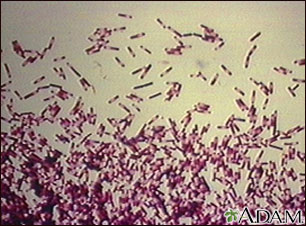Researchers from Brigham and Women’s Hospital and Harvard Medical School in Boston estimate the annual cost of the five leading infections contracted in health care facilities in the U.S. at $9.8 billion, with surgical site infections causing about one-third of those costs. The team led by Brigham and Women’s research fellow Eyal Zimlichman published its findings yesterday online in the journal JAMA Internal Medicine (paid subscription required).
The researchers, which included with colleagues from Brigham and Women’s Hospital, Harvard Medical School, Sheba Medical Center in Israel, and Texas Medical Institute of Technology in Austin that funded the study, sought to better calculate the costs of the leading health care associated infections that patients acquire during the course of receiving treatment for other conditions. The U.S. Centers for Disease Control and Prevention (CDC) says 1 in 20 hospitalized patients contracts an infection in the course of their stay.
A 2009 report from CDC uses two different methods for calculating the direct medical costs of health care associated infections that generated inflation-adjusted estimates ranging from $28.4 to $45 billion. For this study, the researchers were particularly interested in estimating the costs of the most significant and preventable infections, for which they reviewed medical literature from 1986 through April 2013, supplemented by infection incidence estimates from CDC’s National Healthcare Safety Network.
The team used statistical simulations to estimate the costs of infections and confidence intervals, with dollars adjusted for inflation to 2012. It found the most expensive health care associated infection per case to be central line-associated bloodstream infections that each cost more than $45,800. A central line, also called a central venous catheter, is a tube placed in a large vein placed in the neck, chest, or groin to give medication or fluids or to collect blood for medical tests.
The researchers estimate ventilator-associated pneumonia infections each cost more that $40,000. Surgical site infections each cost nearly $21,000, Clostridium difficile bacterial infections often affecting older adults taking antibiotics are each estimated to cost almost $12,000, and catheter-associated urinary tract infections are estimated at nearly $900 each.
The team estimated as well the costs of these infections to the overall health care system, and calculated that the five infections together cost providers and payers some $9.8 billion per year. Surgical site infections, while not the most expensive type of infection individually, when taken together contribute the most — about one-third (34%) — to the $9.8 billion total.
Ventilator-associated pneumonia infections are a close second, contributing 32 percent of the total. Central-line infections add another 19 percent, Clostridium difficile infections contribute 15 percent, and catheter-associated urinary tract infections add less than 1 percent to the total cost.
Zimlichman and colleagues note that health care institutions have taken steps to improve the quality of their services and in recent years reduced both the incidence and costs of health care associated infections. The authors add the savings realized from these initiatives should encourage hospitals to invest in further steps to control these infections, particularly as new payment models are introduced.
Read more:
- Telemedicine Found to Improve Rural Pediatric Emergency Care
- Simplified Medicare Could Save Money, Improve Senior Health
- Emergency Care Costs Likely Higher than Current Estimates
- Recommended Heart Failure Meds Save Lives, and Maybe Money
- Grant to Fund Patient-Sourced Health Outcome Measures
* * *


 RSS - Posts
RSS - Posts
[…] See on sciencebusiness.technewslit.com […]
[…] Top Hospital Infection Costs Estimated at $9.8B Per Year […]